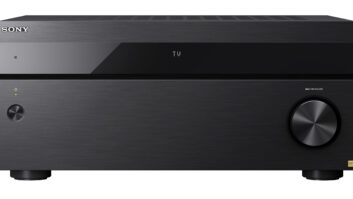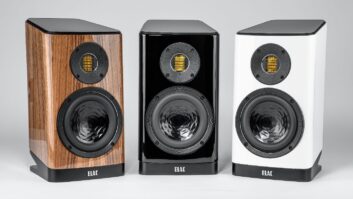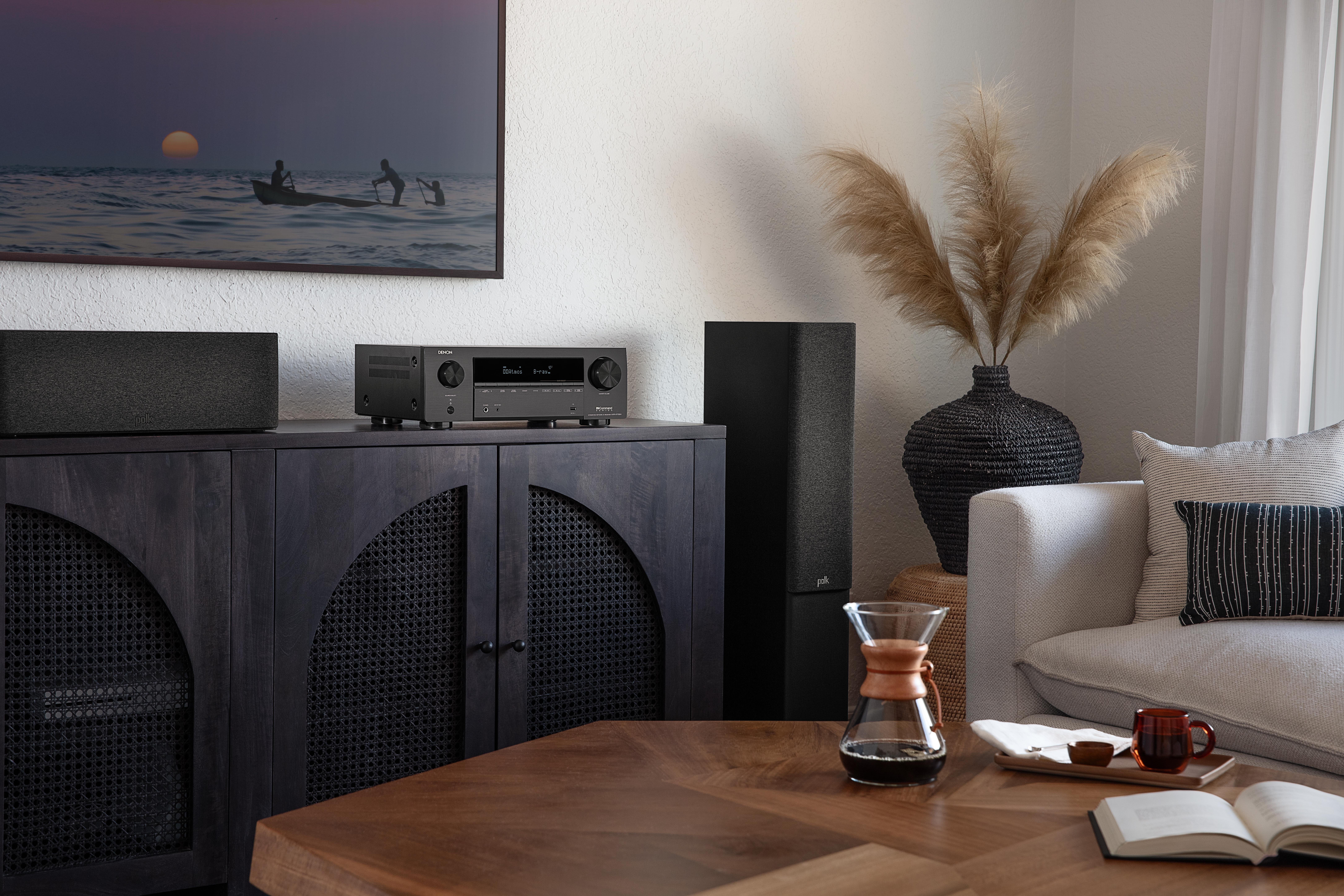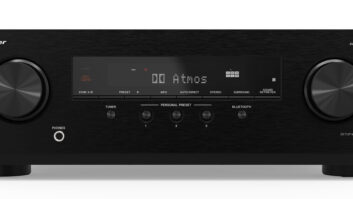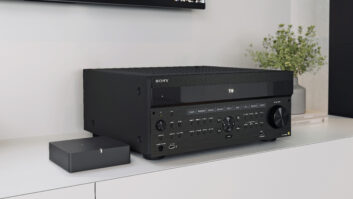As I approach the eight-year mark in my tenure with Residential Systems, I find myself reflecting on just how much our industry has changed since I penned my first review for these pages.
Back then, the discussions we had about which products to review usually came down to one simple criterion: is this a custom product made for the custom market? You don’t need me telling you this, of course, but these days it’s much more of a sliding scale. Rarely do we ask, “Is this custom or consumer?” anymore. It’s more like, “How custom can this thing be?” And few products embody that shifting reality better than Denon’s new AVR-X6400H 11.2-channel AV surround receiver ($2,199).

I say that because, when you get right down to it, there’s very little about the AVR-X6400H that can’t be configured or dialed in by a knowledgeable consumer or even a reasonably savvy neophyte, given how intuitive its back-panel design is, combined with setup menus that hold your hand through the entire setup process.

Fire up the AVR-X6400H, and you’re greeted with menus that ask you, one by one, which speakers you have in the room, then shows you exactly where to connect them. Same for source devices. It’s very nearly impossible to hook this receiver up incorrectly, which is a testament to its UI design, given just how many options there are. There are video scaler settings, for example, as well as volume limiters and volume range choices, mute levels, IP control configurations, trigger setup. There’s a lot to take in here even for the AV receiver expert, but the AVR-X6400H’s UI does such a good job of explaining it all, and lays it all out so well that I’m struggling to imagine anyone getting lost or confused without ever glancing at the manual.
So, like, where do you come in? Why the need for the help of an integrator? Again, it goes back to one simple question: “How custom do you want this thing to be?”
Firstly, the AVR-X6400H (as with all of Denon and Marantz’s latest IP-controllable AVRs) is supported by one of the best SDDP drivers for Control4 that I’ve seen to date. It also boasts Crestron Connected certification, but I’m not a Crestron programmer, so there’s not much I can say about that. For Control4 dealers, though, what you’re presented with is a driver that’s as feature rich as it is well constructed. You’re given direct and obvious access to features ranging from delays (for power on, commands, volume ramping, etc.) to volume steps, to whether or not the receiver displays an onscreen notification when firmware updates are available–all from within Composer Pro.
There’s also the issue of room correction. The AVR-X6400H features Audyssey MultEQ XT32 with LFC, Sub EQ HT, Dynamic Volume, and Dynamic EQ–a package of features collectively labeled “Audyssey Platinum.” Unlike older Denon flagships, it does not support Audyssey Pro, but it is compatible with the new MultEQ Editor app for iOS and Android.
The MultEQ Editor app doesn’t require dealer credentials and is available on applicable app stores for $20. Honestly, though, I think this is going to end up being a tool mostly used by professional integrators. While it doesn’t offer as many measurement positions as the old Audyssey Pro software did (the limit via the app is eight, just as it is if you use the receiver’s UI), it does let you dig into some settings that the UI doesn’t. Midrange Compensation, for example–a function also known as the BBC EQ Dip–can be disabled. You can also tweak target curves, although this isn’t as easy as it could be on a small screen, and you can’t see the in-room responds of your speakers as you’re tweaking curves, so I consider this to be a rather limited feature.
The one thing I’ve been squawking about for years, though–the ability to set a maximum filter frequency for Audyssey–is a function of the app. And it’s a feature that you’re definitely going to be able to employ more intelligently if you have a good deal of experience with room acoustics and advanced room correction. Audyssey hit it out of the park with this one because not only can you set a maximum filter frequency, but you can do it by speaker pair (or, in the case of the center channel, by individual speaker).
Want to demonstrate your value as an integrator? Set up two identical AVR-X6400Hs in your showroom, one with Audyssey running in full-auto mode, the other tuned carefully, with maximum filter frequencies designed to complement the acoustical treatments in your room. I didn’t get to do exactly that in the course of this review, but I did have the rare opportunity to run a similar comparison between the AVR-X6400H, dialed in via the MultEQ editor app, and the remarkably similar Marantz SR6012, which I have on hand for review in another publication, and on which I simply ran Audyssey set to its defaults.
The differences were night and day. Both delivered impeccably controlled bass, with full authority but no blooming or bloat. The real difference was in the mids and highs. With MultEQ max filter frequencies locked in, the AVR-X6400H was simply livelier–more open and natural, less processed. The soundstage was broader and more enveloping. With both receivers configured identically, those differences disappeared.
Of course, none of that would matter if the AVR-X6400H didn’t deliver the goods even without room correction. But it does. Its beefy 140-watts-per-channel output (with an 8-ohm load, 20Hz to 20kHz, 0.05 percent THD, two channels driven) proved more than sufficient to drive a Focal Sib Evo Dolby Atmos system to frightening levels without noticeable coloration or strain. True, the 5.1.2 system falls far short of pushing the 11.2-channel (or 7.1.4, if you prefer) receiver to its limits, but it’s a gorgeous-sounding speaker setup that shines a light on the Denon’s impeccable neutrality, musicality, and solid dynamic punch. My only concern here? The receiver does run quite hot and needs to be exceptionally well ventilated, even without a full load of speakers.
In addition to its fantastic performance, AVR-X6400H has a few other features worthy of note. There’s its integrated HEOS compatibility, of course, which certainly makes it an attractive option if you’re already using HEOS as your digital multiroom speaker ecosystem of choice. HEOS also brings with it another tantalizing feature: Alexa integration, or at least it’s supposed to. Try as I might, I just couldn’t get my Echos to communicate with the AVR-X6400H. But that’s a small nit to pick with a receiver that performs this well and so ably facilitates pretty much any level of custom integration your clients want and need.
